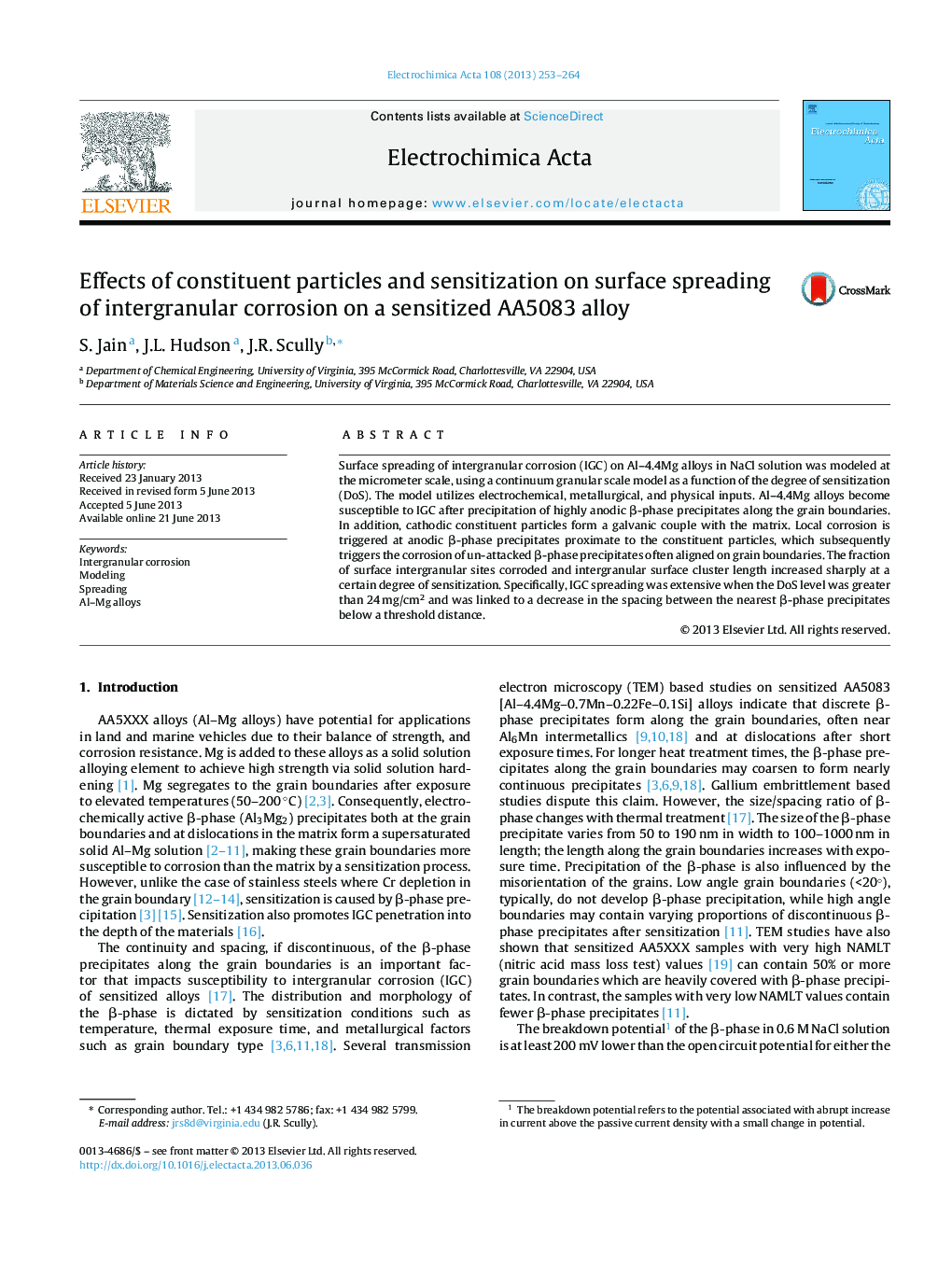| کد مقاله | کد نشریه | سال انتشار | مقاله انگلیسی | نسخه تمام متن |
|---|---|---|---|---|
| 186797 | 459624 | 2013 | 12 صفحه PDF | دانلود رایگان |

Surface spreading of intergranular corrosion (IGC) on Al–4.4Mg alloys in NaCl solution was modeled at the micrometer scale, using a continuum granular scale model as a function of the degree of sensitization (DoS). The model utilizes electrochemical, metallurgical, and physical inputs. Al–4.4Mg alloys become susceptible to IGC after precipitation of highly anodic β-phase precipitates along the grain boundaries. In addition, cathodic constituent particles form a galvanic couple with the matrix. Local corrosion is triggered at anodic β-phase precipitates proximate to the constituent particles, which subsequently triggers the corrosion of un-attacked β-phase precipitates often aligned on grain boundaries. The fraction of surface intergranular sites corroded and intergranular surface cluster length increased sharply at a certain degree of sensitization. Specifically, IGC spreading was extensive when the DoS level was greater than 24 mg/cm2 and was linked to a decrease in the spacing between the nearest β-phase precipitates below a threshold distance.
Journal: Electrochimica Acta - Volume 108, 1 October 2013, Pages 253–264